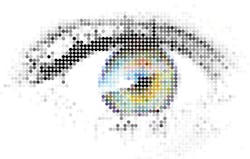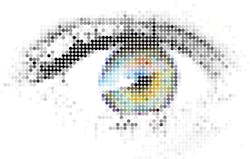All eyes on digital: While life in a dental practice becomes easier, seek a smoother transition
By Jamie Collins, RDH, CDA
There is no escaping it; the digital world is upon us and it is not going away. This extends to everyday life at the dental office through correspondence with patients and other professionals, making our lives easier. By 2015, all health-care offices were required to implement electronic health-care records (EHR) into practice. Health-care providers update EHR for every patient and store them in a database that allows quick reference and reduces the risk of inaccurate information and duplication of treatment and tests. The intention of EHR is accessibility of patient records at any location, anytime, no matter which facility the patient chooses to use for treatment and testing.
Many dental offices are already using a paperless chart system or a combination of paper and digital charts, although some offices still use paper charts. A digital charting system has many benefits, whether it is all digital or a combination of paper and digital. I have been in the world of dentistry long enough that I started with paper charts. As the years passed, I transitioned to digital and can honestly say that electronic systems are much easier to use. You never have to worry about trying to decipher other employees' or dentists' writing. There's no more thumbing through patient charts to find specific items. With the ability to link to digital x-rays and periodontal charting systems, being digital makes it easy to transfer records or referrals with a simple e-mail.
Gloving and regloving just to shuffle through paper and find previous probe depths or to compare and confirm notes from a previous visit can be time-consuming. Having the ability to view this information on a computer screen or in conjunction with a big-screen digital x-ray image allows us to show patients what we are able to see and compare periodontal charts with bitewing and intraoral images. This setup makes it easier to explain and diagnose periodontal disease. In my experience, the technology makes it easier to obtain patient compliance and treatment plan acceptance, because seeing a large visual image is enough to encourage most patients to take control of their own oral health.
Considerations for a digital conversion
Laws require dental records to be maintained by the dentist for six to 10 years, depending upon individual state requirements. Always check state regulations where you practice. Determine a safe place where paper records will be stored and decide how they will be kept during the process of transitioning to digital.
Now that your office is going digital, what about a digital radiography system? Should you continue to use conventional x-rays or transition to digital x-rays? Taking time to research which types of digital radiography software are compatible with the dental software charting programs that you have in your office will make it easier in the long term. Implementing digital x-rays can be very costly, but they provide many benefits and a financial payoff in the future.
A patient who can see the treatment that is recommended via an image on a computer screen versus small, conventional film will be more likely to accept proposed treatment. Digital x-rays also improve the ability to diagnose effectively, as the clinician can see the problem in a larger format and change the contrast of the image as needed. You can talk to patients until you are blue in the face without their fully understanding or accepting the treatment needs you're trying to explain. But when you use a large-screen image of a bitewing to show the bone loss and radiographic calculus that is present, the game changes. Most people don't like knowing that there is a significant amount of disease in their mouth, and having visual images to show this increases case acceptance considerably. This phenomenon doesn't apply just to periodontal disease; digital x-rays are also an effective tool to show decay and other restorative treatment that may be needed.
Practice software. Check. Digital radiography program. Check. So what's next? Intraoral cameras are one of the most valuable tools in my daily practice. They serve a multitude of purposes daily. Explaining a failing filling that needs to be replaced, or cracked teeth that the dentist may recommend crowns to restore, just got a whole lot easier when the patient can visualize the problem. But the benefits of intraoral images don't stop there. During oral cancer screenings, the clinician may note anything suspicious, and this can be monitored not only by a descriptive explanation in the chart notes but also by a photographic image. Referring back to images at subsequent visits allows dental professionals to see any changes in the tissue or abnormal pathology appearance.
Getting insurance companies to pay on dental claims can sometimes be frustrating, as front desk employees well know. Submitting an intraoral image along with an x-ray on a dental claim allows insurance companies to better evaluate and make decisions regarding payment. An x-ray doesn't show a tooth with multiple fracture lines, whereas the photographic image does. Claims processors can see the need for treatment when it is presented this way.
Practice management software smooths the flow of information for the business office staff too. Via the software, fee schedules can be attached automatically to scheduled appointments. As the back office and clinicians get patients checked out, the business office is able to see the treatment that has been completed, access future treatment plan needs, and be prepared to discuss finances and next-visit scheduling once patients arrive back at the front desk.
The implementation of dental practice software allows for integration of other programs and products that are easy for the dental hygienist to use. One fantastic product on the market that helps in the effort to avoid cross-contamination is the Dental R.A.T., a foot-operated mouse that lets the user operate the entire computer system hands free. The mouse also has foot-operated buttons to input corresponding numbers into the digital periodontal chart. With this product, dental offices can have a completely hands-free dental appointment, thus greatly reducing the risk of cross-contamination from going back and forth to the computer to input data.
Periodontal charting is a daily part of the dental hygiene schedule. The focus of transitioning to a chartless office is to allow ease of use and improve time management. How long does it take you to fill out an average periodontal chart? One of my favorite finds over the past few years has been the Voiceworks voice-recognition periodontal charting system by Florida Probe. I had tried a different voice-recognition program previously, but I found it hard to use because it picked up too much background noise. I don't have that issue with my current program.
I have used Voiceworks for the past few years, and on average it cuts the time it takes for me to complete a periodontal charting by a third. The quick-reference arrows show changes from previous periodontal chart entries, which helps with patient education and risk assessment. Many of us are visual learners and respond better to seeing images and charts. Voiceworks not only inputs the pocket depths, but displays them with color-coded graphs on the patient chart. Inputting periodontal pocket depths by voice also reduces the risk of cross-contamination since the clinician is not transferring back and forth to the computer.
Change can be intimidating at times, but it is necessary to keep up with the ever-changing world of dentistry. Transitioning to a paperless dental office is a lengthy process that takes considerable planning and careful decisions about what best serves the needs of the office. The entire effort to go digital can be stressful, but the benefits are monumental once completed. Reducing our reliability on paper can allow clinicians to streamline the process of care and assure the best possible treatment for our patients. RDH
Digital Planning Stages
Once an office has decided to go electronic, what happens next? The first step is to implement a plan and a timeline. Depending on the available staff and the amount of information to be scanned, expect it to take at least six months to a year for a full transition.
The next big decision is which type of practice software to use. The main players on the market are Dentrix and Eaglesoft, with other smaller companies also offering options. One software is not necessarily better than another; it just depends on what appeals to the users. All practice software has the ability to link to a digital radiography system, with a portion of the chart for periodontal measurements, health histories, treatment plans, and chart notes. Part of the process involves determining what type of information needs to be stored electronically, such as scanned lab slips or certain portions of the paper charts, and then deciding which system seems to work best for these purposes.
All of the practice management companies I have had experience with offer training and tutorials online or in person, which is crucial in learning how to use the system effectively and efficiently prior to going "live." This avoids staff having to stumble through trying to learn the new system while seeing patients concurrently. Designated training sessions and time allotted to learn which parts of the software are relevant to the needs of the office are necessary to smoothly implement the system.
Jamie Collins, RDH, CDA, resides in Idaho with her husband, Cory, and their four children. She currently works as a full-time hygienist as well as an educator at the College of Western Idaho. In addition, she acts as a content expert and contributor in multiple upcoming textbooks. She can be contacted at [email protected]

